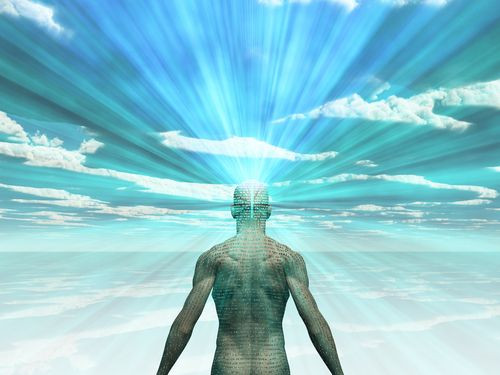Life After Life? Near-Death Experiences Suggest Consciousness Continues Beyond Death

Houston, we have a problem. While medical schools teach doctors you only have five minutes after your heart stops before your brain is damaged, this is not precisely true; some people have been clinically dead for longer than that, yet their brains survive intact. A new study of cardiac arrest patients indicates that 46 percent had memories of the time during which they were clinically dead, while two percent could explicitly recall seeing and hearing events related to their resuscitation. These results, the researchers say, suggest consciousness is present beyond the point at which scientists can detect it. Our minds, then, may be separate from our brains.
Many people believe in the moment of death, when the heart stops beating, when breathing ends, and when the brain stops functioning due to a lack of blood (and oxygen) flow. However, since the 1960s, doctors have used modern CPR methods to restart the heart, allowing people to go beyond this traditional threshold of death. Thousands, if not millions of people now have been known to regain consciousness after the moment of death, and in response scientists believe your brain cells don’t immediately disintegrate when the brain no longer functions, but it may take time, possibly hours, until all the individual neurons die.
In the current study, Dr. Sam Parnia designed and conducted the AWARE study — AWAreness during REsuscitation — in order to iron out some of these issues. In particular, Parnia wanted to understand the quality of oxygen getting into the brain in order to improve resuscitation techniques, while also exploring the many different reports of those who were revived following cardiac arrest (CA). The four-year observational study used a three-stage interview process by which the researchers tested the accuracy of claims of visual and auditory awareness/memories during cardiac arrest and then objectively verified these claims.
Among 2,060 people who experienced cardiac arrest, 330 survived and of these survivors 140 reported at least partial awareness at the time of resuscitation. Nearly half (46 percent) had memories with seven major themes: fear; animals/plants; bright light; violence/persecution; deja-vu; family; and recalling events post-cardiac arrest. Two percent described awareness with explicit recall of seeing and hearing actual events related to their resuscitation.
In a panel discussion at the New York Academy of Sciences, Sam Parnia noted that he’s resuscitated “hundreds, if not more,” patients, and cardiac arrest is very well understood. “Zero blood is getting into their brain, and it does stop functioning within seconds,” he explained. However, the data suggest that “so-called out of body experiences cannot be defined as hallucination,” he said, adding that consciousness “disappears from the general view,” with doctors unable to detect any signs of it following clinical death.
Dr. Mary Neal, a member of the panel discussion, believes these after life experiences are not simple recollection. “It is qualitatively different type of memory,” said Neal, who drowned in a kayak accident, remaining underwater for up to 30 minutes. This experience, she said, of being dead is not the same as, say, her unforgettable memory of the day her son was killed.
Dr. Peter Fenwick, another member of the panel as well as a neuropsychiatrist, believes out of body experiences are very common, and have been recorded throughout the world and also throughout time. (Some believe one in 20 people will have an out of body experience in their lifetime.) During cardiac arrest, the brain is not functioning; however, many people have come out of their body to perceive what is going on around them. “This suggests the mind and brain can separate,” Fenwick stated. Some death-survivors, he noted, report hearing conversation taking place in another room, while others see not only the tops and sides of their body but also the bottom as well. Considering these experiences, Fenwick believes they may have entered a five-dimensional reality.
Source: Parnia S, Spearpoint K, de Vos G, et al. AWARE—AWAreness during REsuscitation—A prospective study. Resuscitation. 2014.



























